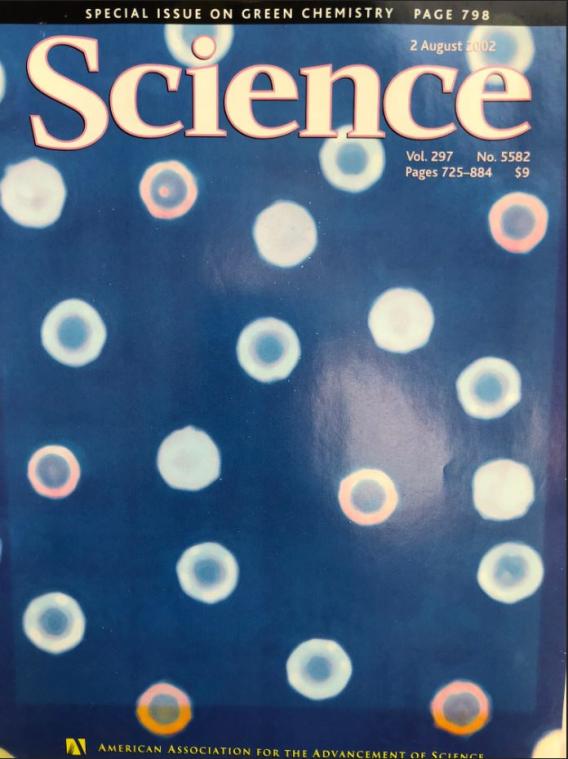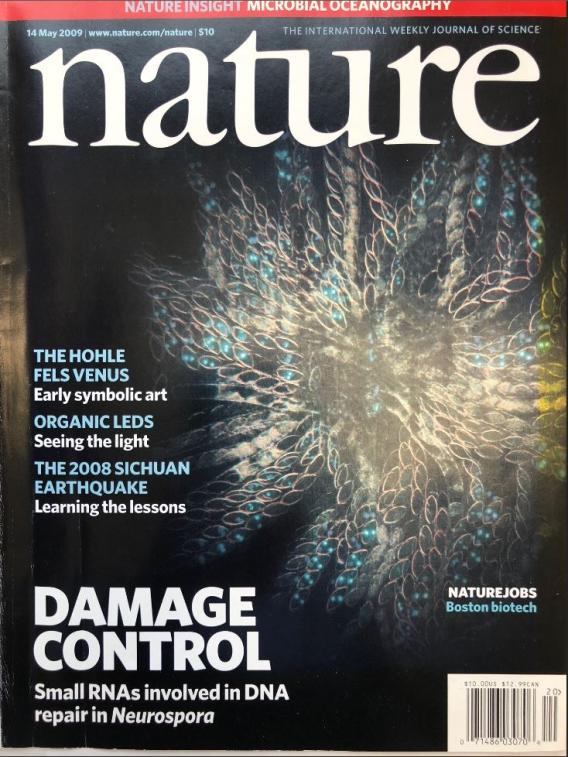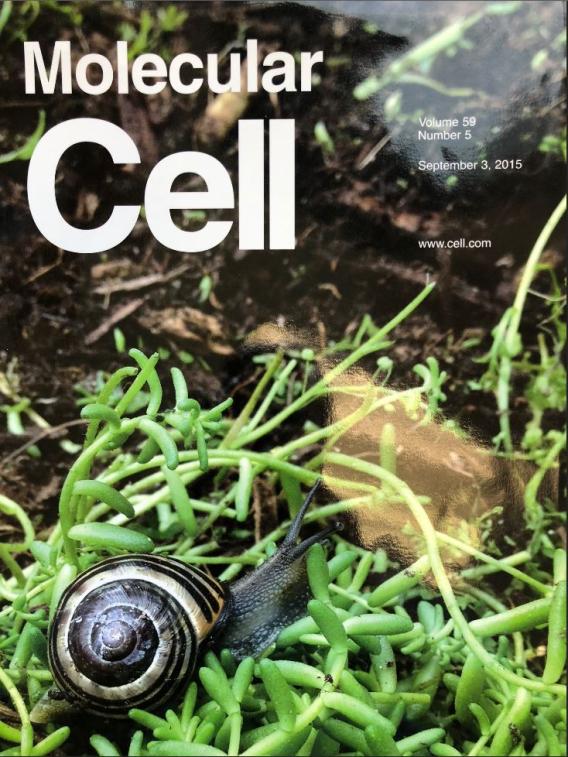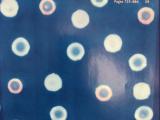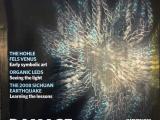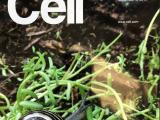Meet the PI

Yi Liu, Ph.D.
Education
Undergraduate: Wuhan University (1989), Biology
Graduate School: Vanderbilt University (1995), Biology
Research Interest
- New genetic codes, Mechanisms of circadian clocks, non-coding RNA
- Role of codon usage biases in regulating gene expression and protein structure
- Small non-coding RNAs and long non-coding RNAs
Research
The Liu Lab is interested in the functions and mechanism of codon usage biases, circadian clocks, and non-coding RNA.
Most amino acids are encoded by two to six synonymous codons. Preferential use of certain synonymous codons, a phenomenon called codon usage bias, was found in all genomes. We demonstrate that synonymous codons can have major impact on protein function and protein expression levels without affecting protein amino acid sequence. Codon usage regulates protein structure and function by regulating the speed of translation elongation and co-translational folding process. In addition, codon usage bias and predicted protein structures correlate in fungi and animal systems. On the other hand, we discovered that codon usage plays an important role in determining gene expression levels in fungi and mammalian cells. Together these results uncovered the existence of unexpected codon usage codes within genetic codons for protein folding and gene expression. Our results also suggest that synonymous mutations can be a cause for human diseases. We are now using molecular, biochemical, genetic, and systems biology approaches to address these fundamental questions in fungi and animals.
Circadian clocks have been described in almost all organisms ranging in complexity from single cells to mammals and function to control daily rhythms in a variety of biochemical, cellular, physiological, and behavioral events. These rhythms have a period close to 24 hours (circadian) and persist in the absence of external time cues. In humans and mammals, circadian clocks control events such as sleep-wake and activity cycles, body temperature cycles, endocrine functions, and gene expression. Clinical consequences in humans including sleep disorders and depression can be observed when the clock malfunctions. The influence of a functional clock on temporal regulation is evident from the decreased performance of shift workers and the jet lag felt by long distance travelers.
Our lab is using filamentous fungus Neurospora, which has a circadian clock similar to those of animals, to understand the molecular mechanisms of circadian clock. Our research on the circadian clock has focused on the circadian oscillator mechanism and has resulted in the identification of many new clock genes and uncovered several new regulatory mechanisms in circadian clocks. We established a molecular and biochemical model for the circadian feedback loop that involves post-translational and post-transcriptional regulation as important processes. We discovered and characterized a phosphorylation/ubiquitination pathway, which is the major mechanism that determines clock period length. Furthermore, we discovered a novel circadian light-signaling pathway that is now understood from the photoreceptor to the mechanism of light-induced transcriptional activation.
The production of double-stranded RNA (dsRNA) or small non-coding RNAs is known to elicit RNA interference (RNAi) in most eukaryotes. RNAi and related pathways are evolutionarily conserved gene silencing mechanisms that regulate gene expression, development, genome stability, and host-defense responses from fungi to human. The filamentous fungus Neurospora crassa, an organism that broadly employs gene silencing in regulation of gene expression, offers a unique and powerful system for understanding the RNAi pathway, small RNA production, and its function in eukaryotes. Using Neurospora as a model system, we have revealed the mechanism of the RISC activation process in the RNAi pathway. We also showed that dsRNA activates a novel signaling pathway to induce transcription of many genes in Neurospora, including most of the RNAi components, putative antiviral genes, and homologs of the interferon stimulated genes. In addition, we have uncovered several novel small RNA production pathways in this organism that are conserved in higher eukaryotes. Our current research is focusing on the understanding of the biogenesis pathways of small non-coding RNAs, regulation of RNAi components and on the involvement of RNAi pathway in various cellular processes.
Publications for Dr. Yi Liu
Featured Publications
Viral RNA blocks circularization to evade host codon usage control.
Liu H, Duan J, Garg R, Xie P, Liu Y, 2025 Dec NatureNuclear effects play an important role in determining codon usage-dependent human gene expression
Renu Garg, Pancheng Xie, Jiabin Duan, Huan Liu, Yi Liu 2025 Nature CommunicationsSynonymous but not Silent: The Codon Usage Code for Gene Expression and Protein Folding.
Liu Y, Yang Q, Zhao F, 2021 Jan Annu Rev BiochemGenome-wide role of codon usage on transcription and identification of potential regulators.
Zhao F, Zhou Z, Dang Y, Na H, Adam C, Lipzen A, Ng V, Grigoriev IV, Liu Y, 2021 Feb Proc Natl Acad Sci U S A 6 118Effects of codon usage on gene expression are promoter context dependent.
Yang Q, Lyu X, Zhao F, Liu Y, 2021 01 Nucleic Acids Res 2 49 818-831A code within the genetic code: codon usage regulates co-translational protein folding.
Liu Y, 2020 09 Cell Commun Signal 1 18 145FRQ-CK1 interaction determines the period of circadian rhythms in Neurospora.
Liu X, Chen A, Caicedo-Casso A, Cui G, Du M, He Q, Lim S, Kim HJ, Hong CI, Liu Y, 2019 Sep Nat Commun 1 10 4352Codon usage regulates human KRAS expression at both transcriptional and translational levels.
Fu J, Dang Y, Counter C, Liu Y, 2018 11 J. Biol. Chem. 46 293 17929-17940Antisense transcription licenses nascent transcripts to mediate transcriptional gene silencing.
Dang Y, Cheng J, Sun X, Zhou Z, Liu Y 2016 Nov Genes Dev. 21 30 2417-2432Codon usage affects the structure and function of the Drosophila circadian clock protein PERIOD.
Fu J, Murphy KA, Zhou M, Li YH, Lam VH, Tabuloc CA, Chiu JC, Liu Y 2016 Aug Genes Dev. 15 30 1761-75Nonoptimal codon usage influences protein structure in intrinsically disordered regions.
Zhou M, Wang T, Fu J, Xiao G, Liu Y 2015 Jun Mol. Microbiol.Transcriptional interference by antisense RNA is required for circadian clock function.
Xue Z, Ye Q, Anson SR, Yang J, Xiao G, Kowbel D, Glass NL, Crosthwaite SK, Liu Y 2014 Aug NatureHomologous recombination as a mechanism to recognize repetitive DNA sequences in an RNAi pathway.
Zhang Z, Chang SS, Zhang Z, Xue Z, Zhang H, Li S, Liu Y 2013 Jan Genes Dev. 2 27 145-50Non-optimal codon usage affects expression, structure and function of clock protein FRQ.
Zhou M, Guo J, Cha J, Chae M, Chen S, Barral JM, Sachs MS, Liu Y. 2013 Nature 495(7439)Non-optimal codon usage is a mechanism to achieve circadian clock conditionality.
Xu Y, Ma P, Shah P, Rokas A, Liu Y, Johnson CH. 2013 Nature 495(7439)RNA Interference Pathways in Fungi: Mechanisms and Functions.
Chang SS, Zhang Z, Liu Y 2012 Jun Annual review of microbiologyThe translin-TRAX complex (C3PO) is a ribonuclease in tRNA processing.
Li L, Gu W, Liang C, Liu Q, Mello CC, Liu Y 2012 Jul Nature structural & molecular biologyRNA interference in fungi: pathways, functions, and applications.
Dang Y, Yang Q, Xue Z, Liu Y 2011 Sep Eukaryotic Cell 9 10 1148-55Diverse pathways generate microRNA-like RNAs and Dicer-independent small interfering RNAs in fungi.
Lee, H.C, L. Li, W. Gu, Z. Xue, S. K. Crosthwaite, A. Pertsemlidis, Z. A. Lewis, M. Freitag, E.U. Selker, C.C. Mello, and Y. Liu. 2010 Molecular Cell (cover article) 38 803-814 (cover article)qiRNA is a new type of small interfering RNA induced by DNA damage
Lee HC, Chang SS, Choudhary S, Aalto AP, Maiti M, Bamford DH, Y. Liu. 2009 Nature (cover article) 459 274-277. Cover ArticleThe Exosome Regulates Circadian Gene Expression in a Posttranscriptional Negative Feedback Loop
Guo J, Cheng P, Yuan H and Y Liu 2009 Cell 138 1236-1246A double-stranded-RNA response program important for RNA interference efficiency.
Choudhary S, Lee HC, Maiti M, He Q, Cheng P, Liu Q, Liu Y 2007 Jun Mol. Cell. Biol. 11 27Molecular mechanism of suppression of circadian rhythms by a critical stimulus.
Huang G, Wang L, Liu Y 2006 Nov EMBO J. 22 25Regulation of the Neurospora circadian clock by an RNA helicase
Cheng, P., Q. He, Q. He, L. Wang, and Y. Liu. 2005 Genes & Development 19 234-241Distinct roles for PP1 and PP2A in the Neurospora circadian clock.
Yang, Y., Q. He, P. Cheng, P. Wrage, O. Yarden, and Y. Liu. 2004 Genes & Development 18 255-260Functional conservation of light, oxygen, or voltage domains in light sensing.
Cheng P, He Q, Yang Y, Wang L, Liu Y 2003 May Proc. Natl. Acad. Sci. U.S.A. 10 100White Collar-1, a circadian blue light photoreceptor, binding to the frequency promoter.
Froehlich AC, Liu Y, Loros JJ, Dunlap JC 2002 Aug Science 5582 297 815-9Regulation of the Neurospora circadian clock by casein kinase II
Yang, Y., P. Cheng, and Y. Liu. 2002 Genes & Development 15 994-1006White Collar-1, a DNA-binding transcription factor and a light sensor
He, Q.*, P. Cheng*, Y. Yang, L. Wang, K. H. Gardner, and Y. Liu 2002 Science (cover article) 297 840-843Interlocked feedback loops contribute to the robustness of the Neurospora circadian clock.
Cheng P, Yang Y, Liu Y 2001 Jun Proc. Natl. Acad. Sci. U.S.A. 13 98Circadian orchestration of gene expression in cyanobacteria.
Liu Y, Tsinoremas NF, Johnson CH, Lebedeva NV, Golden SS, Ishiura M, Kondo T, 1995 Jun Genes Dev 12 9 1469-78Bacterial luciferase as a reporter of circadian gene expression in cyanobacteria.
Liu Y, Golden SS, Kondo T, Ishiura M, Johnson CH, 1995 Apr J Bacteriol 8 177 2080-6High-throughput discovery of genetic determinants of circadian misalignment.
Zhang T, Xie P, Dong Y, Liu Z, Zhou F, Pan D, Huang Z, Zhai Q, Gu Y, Wu Q, Tanaka N, Obata Y, Bradley A, Lelliott CJ, Nutter LMJ, McKerlie C, Flenniken AM, Champy MF, Sorg T, Herault Y, Angelis MH, Durner VG, Mallon AM, Brown SDM, Meehan T, Parkinson HE, Smedley D, Lloyd KCK, Yan J, Gao X, Seong JK, Wang CL, Sedlacek R, Liu Y, Rozman J, Yang L, Xu Y, 2020 Jan PLoS Genet. 1 16 e1008577Transcription of the major neurospora crassa microRNA-like small RNAs relies on RNA polymerase III.
Yang Q, Li L, Xue Z, Ye Q, Zhang L, Li S, Liu Y 2013 Jan PLoS Genet. 1 9 e1003227Convergent Transcription Induces Dynamic DNA Methylation at disiRNA Loci
Dang Y, Li L, Guo W, Xue Z, Liu Y. 2013 PLoS Genet. Sep;9(9):e1003761Regulation of the activity and cellular localization of the circadian clock protein FRQ.
Cha J, Yuan H, Liu Y 2011 Apr J. Biol. Chem. 13 286 11469-78Contact Us
Email
Phone Number: 214-645-6033
Fax Number: 214-645-6049
Physical Address
Department of Physiology
5323 Harry Hines Blvd.
Dallas, TX 75390-9040
Join Our Lab
For graduate students and postdoctoral fellows who are interested in joining our group, please email Yi Liu at Email.
